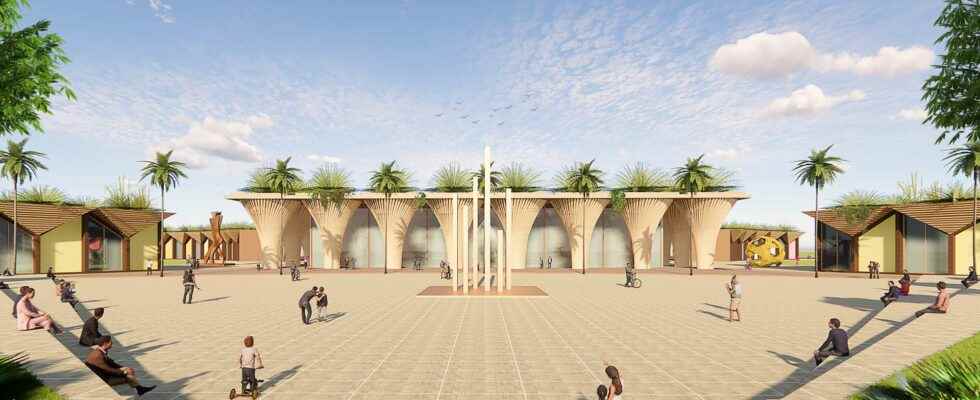Materials derived from plants are increasingly replacing polluting raw materials. Thus, we see architectural projects springing up from the ground, such as this village built from the recycling of cocoa bean shells, but also… vegetable peelings, grape skins or flax, which find surprising and sustainable outlets. .
You will also be interested
[EN VIDÉO] Feel the peel: the 3D printer citrus press! This juicer is also a 3D printer: it creates a cup with the skin of the orange that you are going to drink!
Bridge, house, coverings… What if we replaced the materials raw materials and polluting with more sustainable materials? This is the idea of several projects deployed in recent years in several cities around the world, each as surprising as the next.
The linen textile fiber for this bridge
April 22, the date of the earth day, the inauguration of a new kind of bridge near Amsterdam has been talked about. His particuliarity ? No concrete, but a structure entirely made of fiberglass. linen and bio-resin. From sensors were installed on the constructionin order to assess the strength of the bridge over time, in particular its ability to withstand bad weather and vibes. Behind this innovative project, the Norman company Eco Techni Linendirected by Thibault Roumier.
Widely used in the textile industry, but also in the automotive and sports industries, linen has the major advantage of requiring much less consumption and growing in autonomy in many regions, both in Normandy and in the Netherlands. A material which could therefore have a future in the sector of construction.
Potato peelings for your next glasses
Always with a view to opting for more ecological and more durable materials, others draw their sources of inspiration from plants. If we are no longer surprised put on shoes made from apple leather or cowhide grapeknow that you could one day come across a piece of furniture or frames made of peelings… of potatoes.
It is the original idea of two English students in graphic design who imagined a coating for furniture whose panel was entirely designed from of peels of potatoes. The objective is to offer a more ecological alternative to medium density fibreboard, while limiting food waste. An end-of-year project launched in 2019, which finally turned into a real business and gave birth to the range chips[s] board, still marketed to this day. In addition to coatings for furniture, the company now offers eyeglass frames made from potato peelings, as well as a range of bioplastics translucent pure or reinforced with fibers for fashion and interior decoration.
3D printer and cocoa shells for this ecovillage
It is this year that the work intended to give life to the Cocoa Eco Village should start. Located northwest of theEcuadorin the town of Pedernales which is home to the greatest cultures of cocoa of the country, this ecovillage project was designed by thearchitect Italian Valentino Gareri, who imagined buildings designed using cocoa fibers recycled from a 3D printer. Cocoa Eco Village is presented as “ the first in a global network of sustainable and smart villages, a neutral destination in carbon and an innovation center forcircular economy“.
A functional, modular and sustainable design for the Cacao Eco Village, carbon neutral, which aims to be a center of innovation for the circular economy in the cocoa industry. © MUZE Chocolate TV
Carried out in collaboration with the chocolate maker Muze and the Avanti association, the project plans to install a cocoa processing plant in order to ” design new ethical, highly traceable, cocoa-based products that offset the carbon footprint “. Entirely eco-designed, the future houses of the ecovillage will also have a roof intended to recover rainwateras well as a ventilation natural.
Interested in what you just read?
